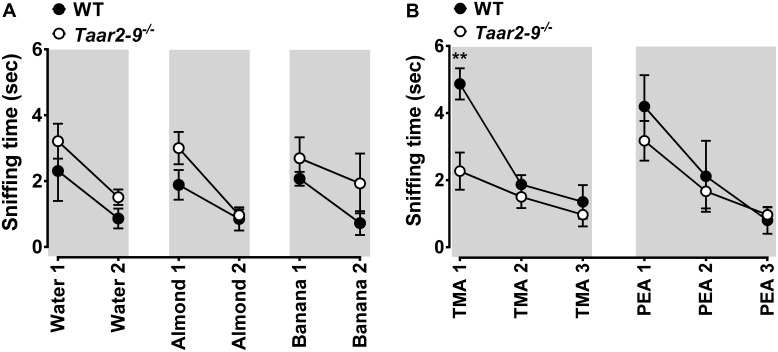FIGURE 2.
Behavioral response of wild type (WT) and Taar2-9−/− mice to non-mouse odors. Mean (±SEM) period of time Taar2-9−/− males (open circles) and their wild type (WT) littermates (filled circles) spent sniffing cotton-tipped wooden applicators soaked with (A) 100 μl distilled water, almond extract, banana imitation extract and (B) the volatile amines trimethylamine (TMA, 5 mM) and β-phenylethylamine (PEA, 5%) during a period of 2 min. Water, almond, and banana extracts were presented twice and amines were presented three times; all odors were freshly prepared for each trial. Taar2-9−/− mice and their WT littermates spent similar amounts of time sniffing water (Mann–Whitney U test, U = 16, NWT = 5, NTaar2-9-/- = 9, P = 0.44), almond (U = 12, NTaar2-9-/- = 9, NWT = 5, P = 0.19), banana (U = 18.5, NTaar2-9-/- = 9, NWT = 5, P = 0.64), and PEA (NTaar2-9-/- = 9, NWT = 5), but Taar2-9−/− mice spent less time sniffing TMA than WT mice (NTaar2-9-/- = 9, NWT = 5). ∗∗P < 0.05.

